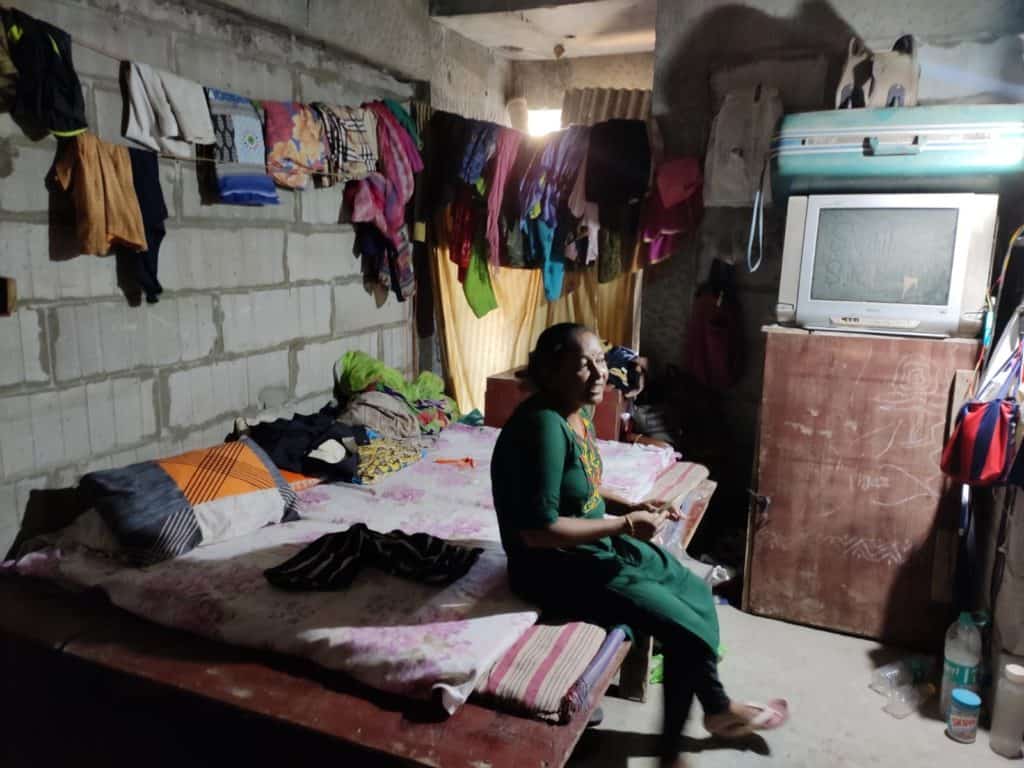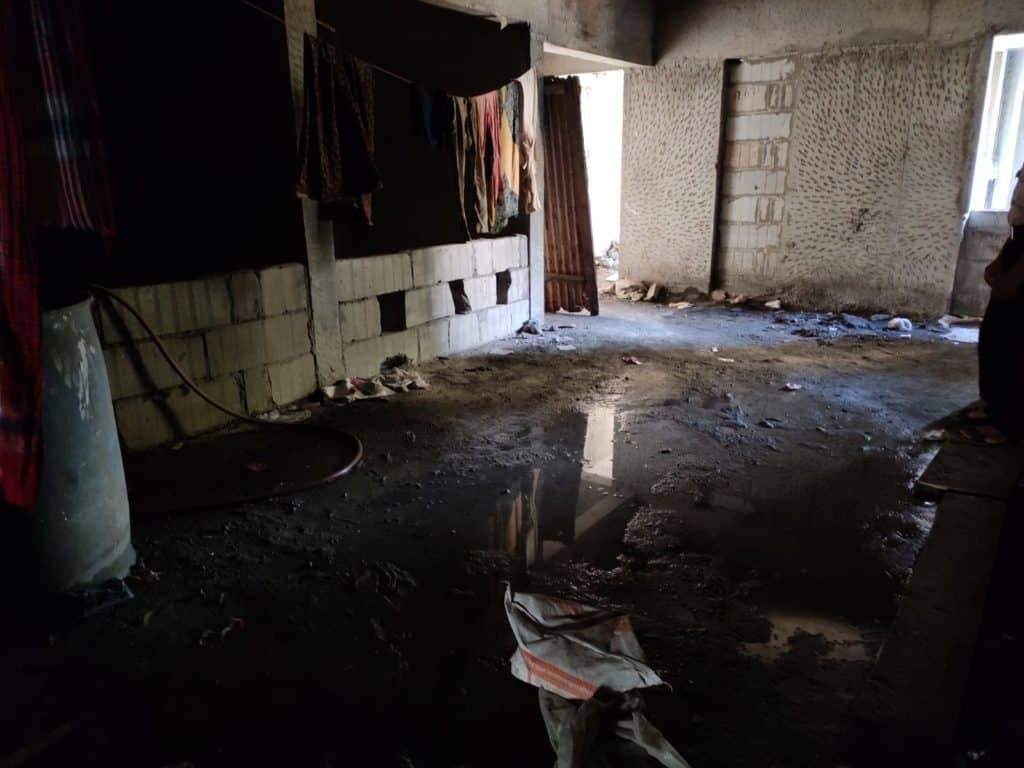On a typical summer day in Mumbai, crowds of workers from different professions descend onto local train platforms in the city, waiting for the next train to fight their way into. Some of them are street vendors who are headed for the area where they will set up shop, on the streets, under large umbrellas or under the shades of trees. But there are also others — construction workers among them, who have no choice but to work while being directly exposed to the sun and hence face uniquely challenging conditions.
Gopal Ahlawat, one such worker, has to meet his target of bricklaying for the week at a construction site in Goregaon East. “We work 3-4 hours every day, doing rigorous labour, it can be very tiring,” he says. Not just Gopal, but all construction workers in Mumbai have to toil it out at the sites, regardless of the weather conditions or other factors. This year especially, even for the most immune Mumbaikar, the heat felt worse and part of a pattern witnessed in the last few years.
Summer temperatures are just one of the many occupational hazards construction workers grapple with, but with little power to change the situation. Collapsing walls and scaffolding, falling from heights etc, are all commonly reported causes of injuries, and often casualties, on the job. Recently, six men died at a construction site in Worli when a lift collapsed. These physical and health risks make construction work a dangerous profession. The recent spate of heat waves has only further exacerbated the risks associated with the work they do.
“Being exposed to harmful fumes, gases and vapours from construction material is dangerous as it is, but the heat and humidity adds to the impact. It can affect blood pressure and breathing, besides causing other long term health issues,” says Chinmayee Samal, a researcher of labour and policy at the Indo-Global Social Service Society.
Read more: Why government schemes aren’t reaching those who need it the most in Mumbai
Living and working in unhealthy spaces
Chinmayee adds that the nature of construction work and its ambience can leave workers exposed to harmful elements, sometimes in poorly ventilated spaces. Most construction workers live on-site, and more often than not their living conditions are damaging and do not offer the basic conditions needed for a healthy life. Many of them are migrant workers, who set out on the streets daily looking for work, of which there is no guarantee. On days they do find work, they usually earn Rs 500 a day, making any kind of decent housing unaffordable in Mumbai city.
Shagun Kotla, a carpenter, lives on the site of the building he works on in Goregaon. Five or six workers, including him, share one room and no family is allowed to visit except spouses who are also construction workers. The rooms are small and tightly packed, with large bags that carry all workers’ belongings, and wires that dry their clothes. Some rooms have TVs and beds, but none of them have windows. Rooms are lit with bulbs and the fans run on full speed to help the residents cope with the heat and humidity.
Read more: A look into the homes and lives of Namma Metro workers in Bengaluru
The rooms that do have windows are covered with metal sheets in place of curtains. These metal sheets covering the windows, a common sight at construction sites, are actually counterproductive as they absorb and trap in heat more than they provide shade.

Outside the workers’ rooms is a living area where a water container is kept for them to use for bathing. The water inevitably spills, causing puddles of water that have over time become breeding grounds for mosquitos. In 2021, mosquito-borne diseases were on the rise across the city. As Mumbai prepares for this year’s monsoon, construction workers and others who live in such conditions are at a higher risk of malaria and dengue.
“Living on construction sites is extremely difficult, and working here is dangerous,” said Shagun.

Adapting to the heat
Mumbai isn’t new to heatwaves, and this summer is certainly not the hottest. And while rising temperatures are a direct cause of increasing climate impact globally, construction workers have adapted to high temperatures in the summer months, accepting this as normal. They protect themselves by covering their heads and wearing light clothing.
With no water tankers or a borewell in place, their site gets drinking water for only a few hours in the morning, during which they fill clay pots and drink from them throughout the day. “The clay pots keep the water cool,” said Shagun.
The site has two common washrooms and toilets for the workers, but the washrooms have no running water — they have to use the water from the containers in which they collect water in the mornings. Water, especially in the heat, is inadequate in supply.
“Builders understand the plight of these workers, and allow frequent breaks in the summer months,” said Surendra Ghorpade, the construction site manager at Samarth Tanish in Goregaon East. “Some sites even alter their schedules, so workers don’t have to work in the sunlight, but the BMC’s new rule for construction sites does not permit the work to continue beyond 10 pm.”
The rigorous labour that the construction workers engage in through the day, coupled with their less than ideal living conditions, cause many of them to experience severe burnout and skip work for several days. Some of Gopal’s co-workers have experienced shortness of breath and dehydration. One worker had to be taken to the local BMC hospital as he fainted after vomiting because of a stomach virus.
In case of an emergency at the work site, where a worker needs to be taken to a hospital due to work related injuries or illness, it is the responsibility of the builder to bear all medical costs. Workers say that the person is generally taken to the nearest hospital, which is about a kilometre away. Often however, there are no emergency provisions for them like an on-site ambulance or infirmary and in most cases, they have to walk to the hospital.
What is also noticed is a lack of self care. Workers aren’t aware of the impacts of a heat wave: some don’t drink enough water or eat at regular intervals, causing them to be even more susceptible to heat strokes and severe dehydration.
According to Chinmayee, awareness workshops on ways to mitigate heat stress are important in construction sites, especially as the workers here overestimate their strength and end up overworking themselves. There should be an on-site medical centre at every site to tend to the immediate medical needs of the workers. Construction workers need to be provided better accomodation options that are well ventilated and away from the concrete dust.
Chinmayee also points to the need for appropriate gear like hats and breathable masks if they’re working near the dust. In the absence of that, the dust can settle in the nasal passage causing infections and serious breathing problems.
Working hours and deadlines too need to be reasonably set, so that the physical pressure on workers is not so high as to put them at risk.
Ineffective government intervention
The construction sector of India is one of the largest employers in the country, second only to agriculture. There are government schemes that provide aid to construction workers, but presumably, many fail to avail them. Administrative hurdles like paperwork or lack thereof, as well as digital access cause problems for informal workers. Only 8 lakh construction workers have registered themselves on the E-shram portal – meant to integrate all welfare schemes for workers into one platform.
The Building and Other Construction Workers Act of 1996 regulates the employment and conditions of service of construction workers so as to provide for their safety, health and other welfare measures.
“It’s not like we don’t have provisions. The occupational safety and health code lists out all provisions that workers are entitled to. It even defines the role of builders in ensuring safe and healthy living and working conditions for workers. Despite the comprehensiveness of these Acts, the conditions in construction sites remain poor,” said Chinmayee.
Under the Act, every construction site requires a labour representative to be present, to voice any issues that the workers may have and take it to the contractor, but this representative is hired by the builder, which makes his representation skewed. “When the labour representative is hired by the contractor to protect the rights of labourers, he does so only to protect the contractor from being taken to court, or to avoid police complaints due to accidents and deaths,” said Chinmayee.
On paper, the government has devised interventions to protect its workers but they are not being implemented strictly. Workers are at the mercy of builders to give them work. They don’t speak against their living and working conditions out of fear of losing their livelihoods. As Shagun says, “We can’t say much to these builders. If we get fired, we’ll have to look for new work again.”